The Flycatcher Birds: Midair Masters
Updated: Jun. 22, 2023
Meet the birds named for their ability to catch insects on the fly. Keep your eyes peeled for the fabulous flycatcher bird family.
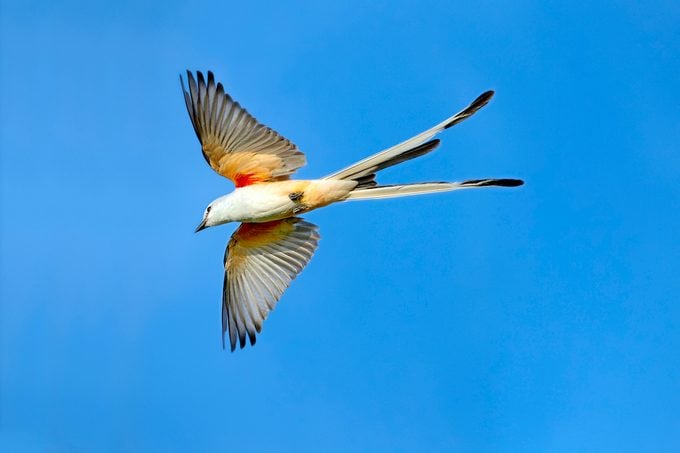
Flycatching has a particular meaning in the world of birds: perching in one spot to watch for flying insects, swooping out to catch them in midair and then returning to the perch. And members of the flycatcher bird family are masters of this behavior.
More than 400 species of flycatchers are found between Alaska and the southern tip of South America, most of them living deep in the tropics. North of the Mexican border, about 35 species are seen regularly.
Bird-watchers sometimes have trouble identifying flycatchers because so many kinds look almost identical and are recognized mainly by their voices. When getting to know these birds, it helps to start by separating them into categories. Here’s a brief introduction to the main groups of flycatcher birds.
The Bold Kingbirds
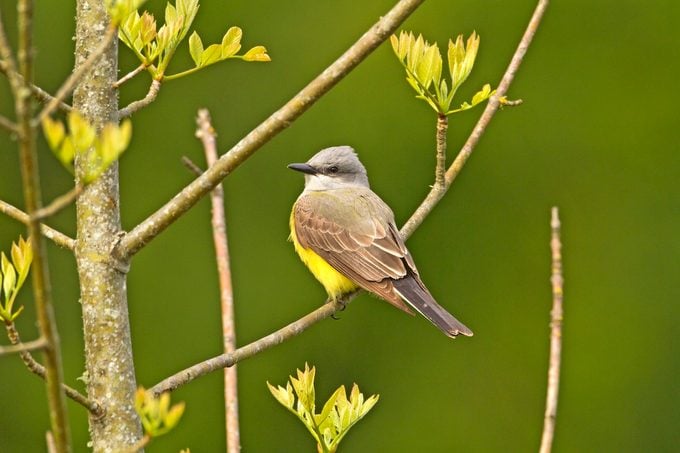
These flycatchers are famed for their commanding behavior, fearlessly attacking much larger birds that get too close to their nests—crows, hawks and even eagles. The eastern kingbird is widespread in summer over the eastern two-thirds of North America, often perching on fences or roadside wires. You may notice it first by its buzzy, sputtering cries as it flies overhead, chasing away some big bird and flashing the broad white band at the tip of its tail.
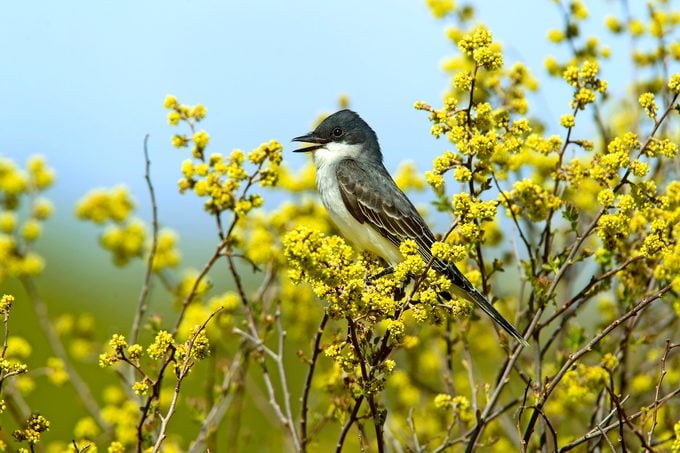
During summer in the Great Plains, the eastern kingbird overlaps with the western kingbird, which has similar habits but different colors, including a bright yellow belly. Five other kingbirds are found in Florida, parts of the West and near the Mexican border.
And a relative of kingbirds, the spectacular scissor-tailed flycatcher, is seen from Texas up to Nebraska, east to Missouri and south to Louisiana. In addition, it represents Oklahoma as the state bird.
The Gentle Phoebes
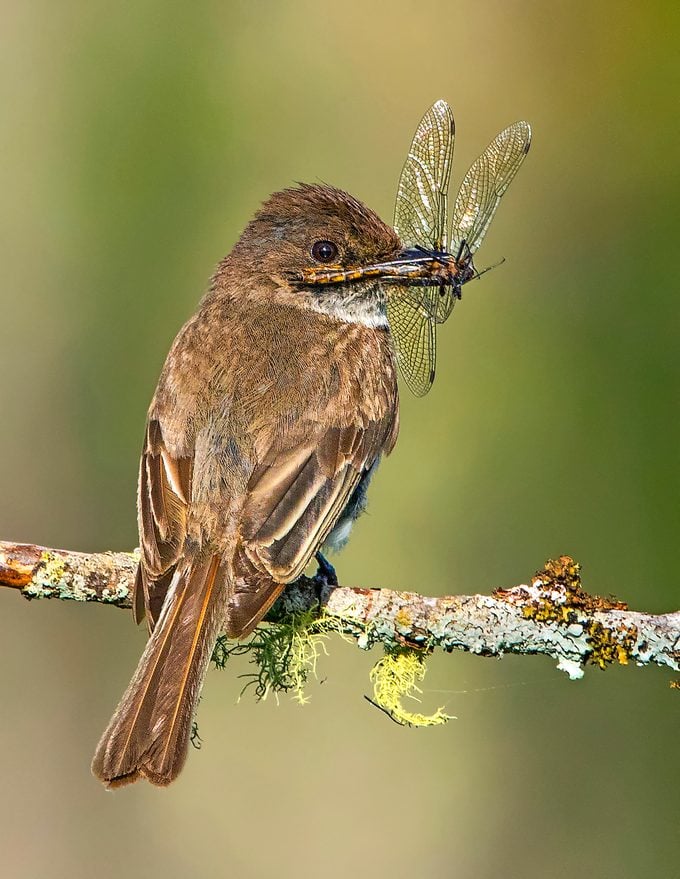
Fee-bee! Fee-bee! The eastern phoebe helps out birders by singing its name in a soft, throaty whistle. Modestly colored in gray and white, this flycatcher can be recognized by its voice and by its habit of gently wagging its tail down and then up. It often lives near people, placing its nest under the eaves of houses or under bridges.
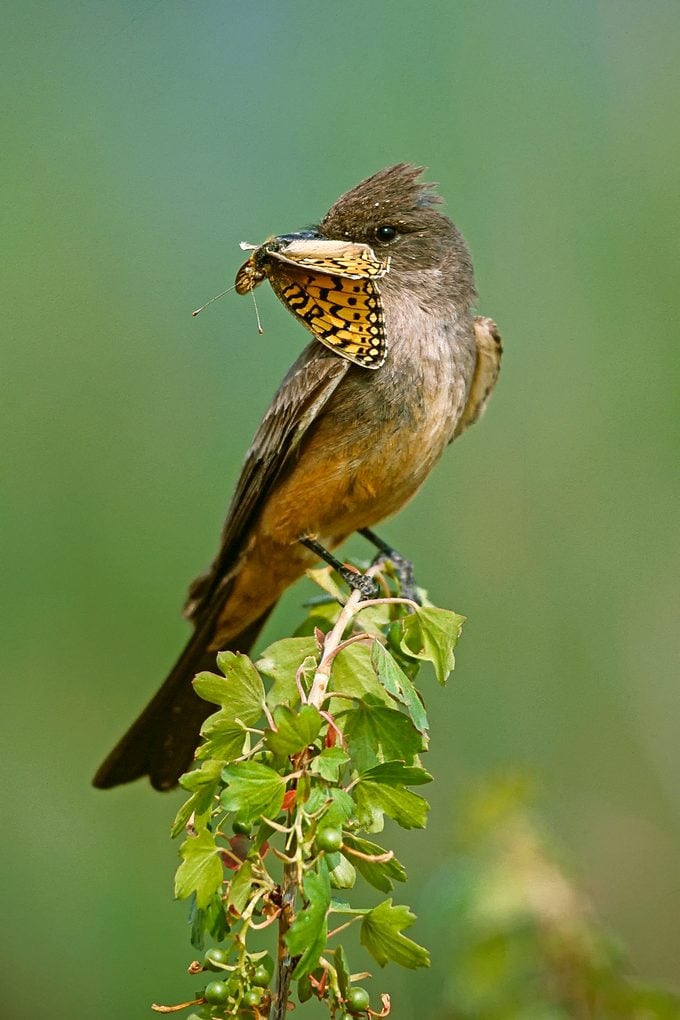
While most flycatchers migrate to the tropics in winter to keep up with their insect prey, many eastern phoebes stay through the season in the southeastern states, surviving on berries during the coldest weather.
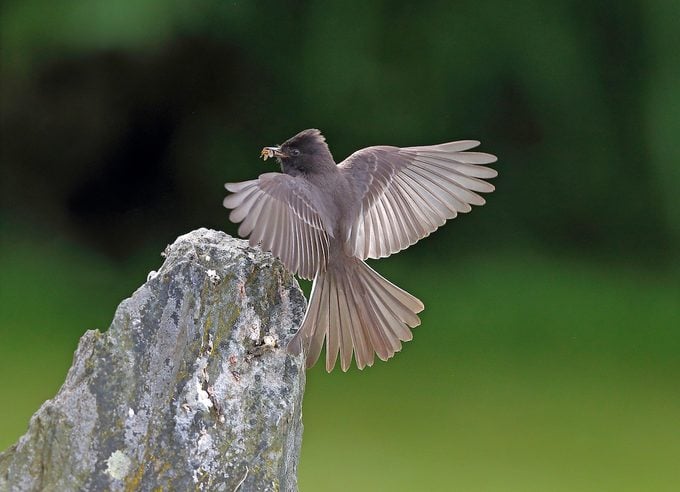
Two western relatives share the tail-wagging habit. The black phoebe lives mostly along streams and rivers, while the earth-toned Say’s phoebe usually sticks to dry plains and ranch country.
The Subtle Wood-Peewees
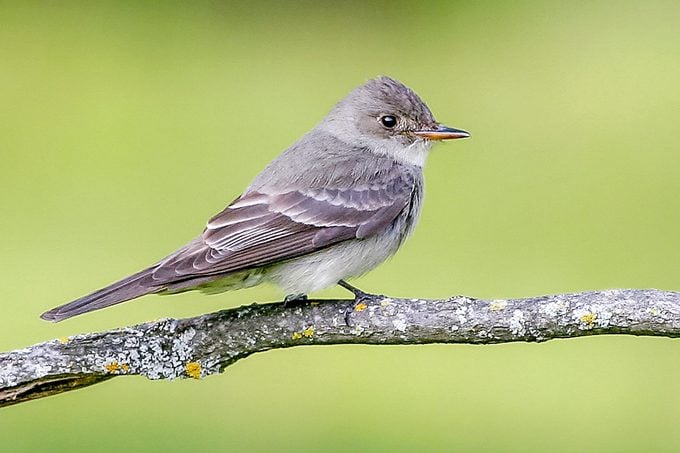
The eastern wood-pewee is another small flycatcher named for its song. It perches high in trees in summer and sings pee-ya-weee? peeyerrr! It’s often hard to see, but it continues singing all spring and summer long. The plaintive whistles provide some of the most pleasing sounds of eastern forests.
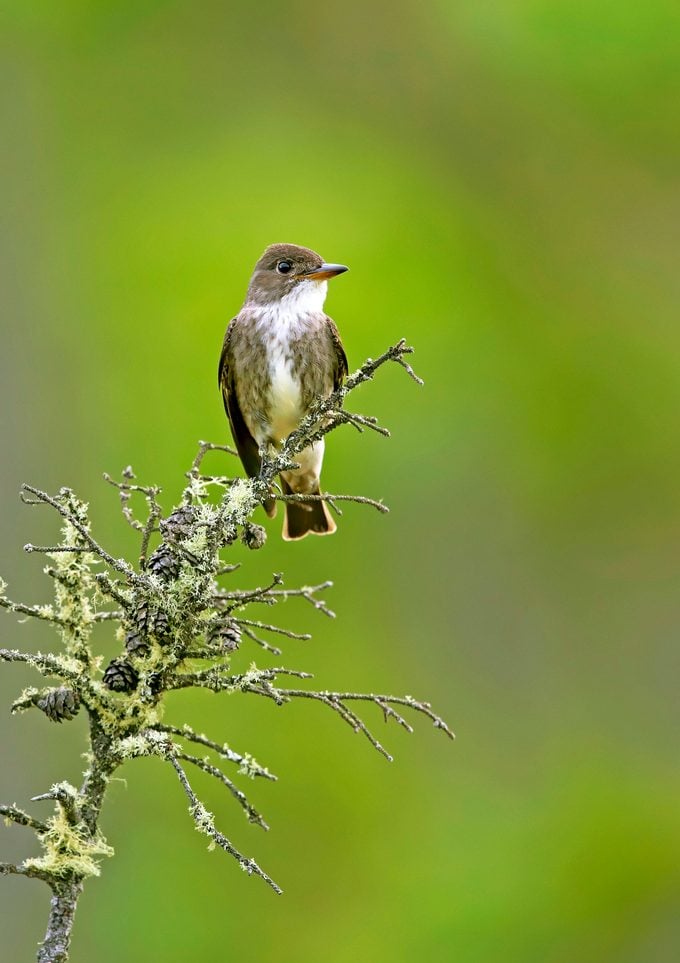
From the Great Plains westward, this bird is replaced by the western wood-pewee, which looks almost identical but has a harsh, buzzy song: pzzzeeyeer! Related to the wood-pewees are the greater pewee of the southwestern mountains and the olive-sided flycatcher found in northern forests.
The Colorful Crested Flycatchers
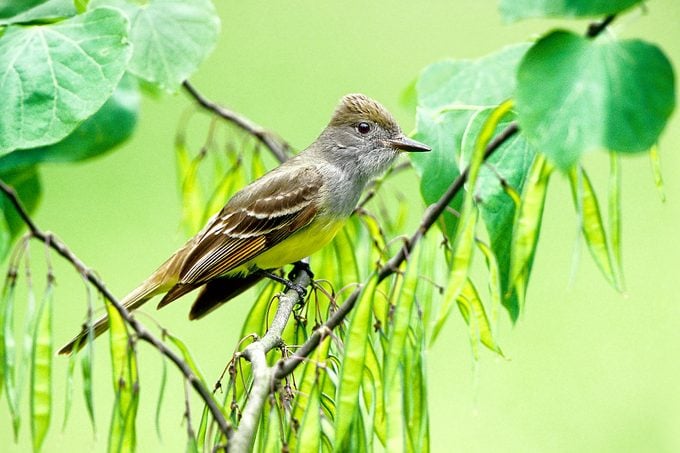
While most flycatchers wear hues that are subdued or even drab, the crested flycatchers show more color, with yellow bellies and reddish brown in the wings and tail. The most widespread type in North America is the great crested flycatcher. It’s common in eastern forests during summer, where it might be located by its loud cries of wheep, wheep!
In the West, the ash-throated flycatcher is a little smaller and paler, with a softer voice, and lives in open woods and desert country. Two other flycatcher species, the brown-crested and the dusky-capped, live close to the Mexican border.
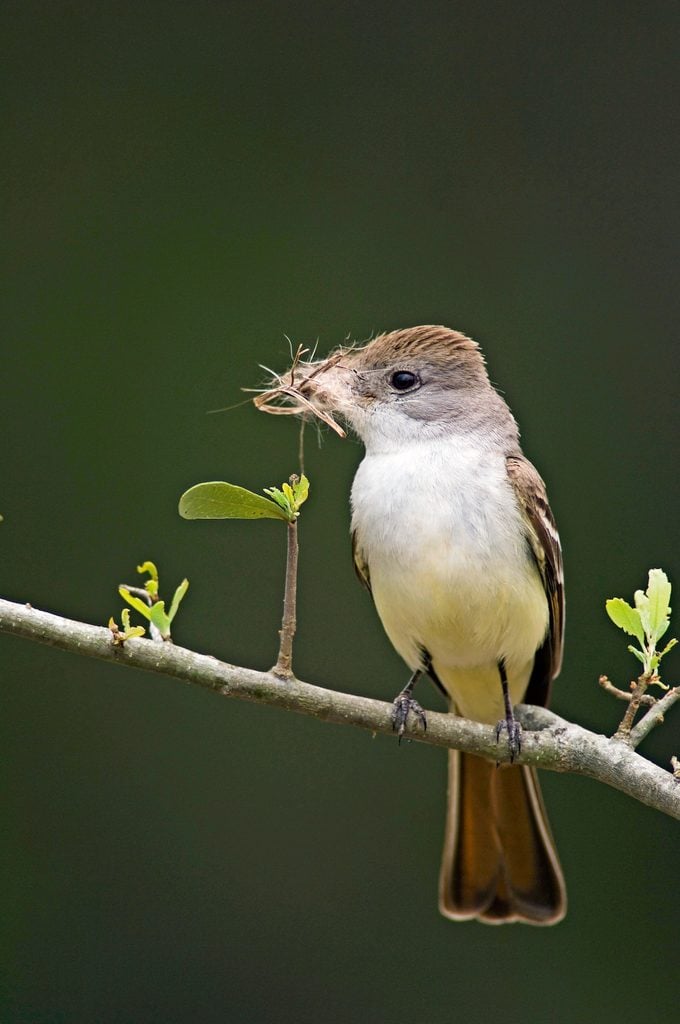
While most other members of the flycatcher bird family build their nests in the open among branches of trees or shrubs, crested flycatchers place their nests in cavities in trees, and they sometimes nest in birdhouses, mailboxes or other human-made sites.
The Confusing Empidonax
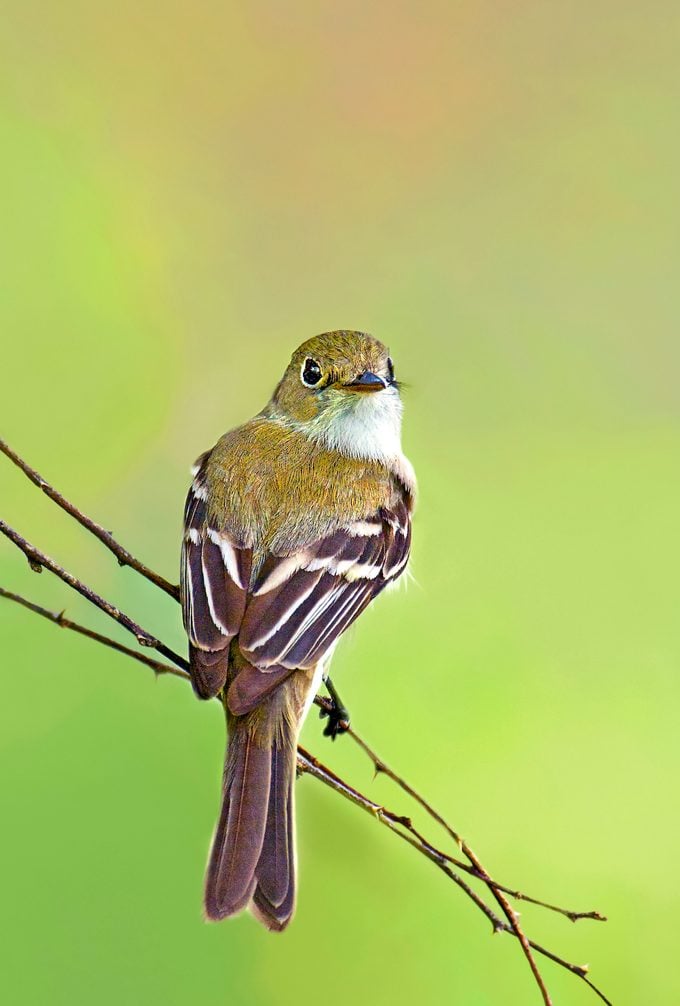
Even experienced birders may be mystified when faced with one of the Empidonax flycatchers. Often called “Empids” for short, these 11 species of small flycatchers all look almost the same. Colored in tones of olive and gray, with underparts varying from whitish to pale yellow, they all have pale wing bars and most have a contrasting pale ring around each eye.
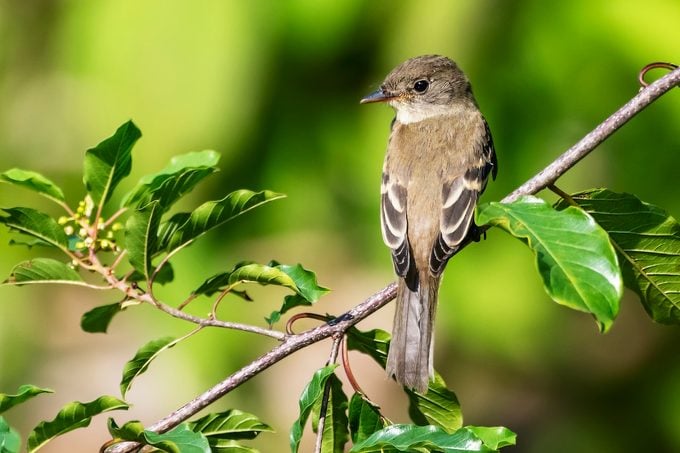
Differences among these 11 species are slight. For example, the least flycatcher is very small and shows strong contrast in its white wing bars and white eye ring, while the willow flycatcher is slightly larger and browner and often shows only a faint eye ring. The alder is small and olive green, with a pale breast and a partial eye-ring.
The songs of all the species are different, but they’re mostly bursts of snappy, buzzy or squeaky notes, so even these are hard to tell apart without some practice.
So what should you do if you spot an Empid, or some other flycatcher that you can’t identify? Just take pleasure in observing it. Watch its perky actions as it peers about, on full alert, waiting for an insect to nab in midair. After all, even the experts can’t always tell them apart, so don’t worry about putting a name on it.
Born to Sing
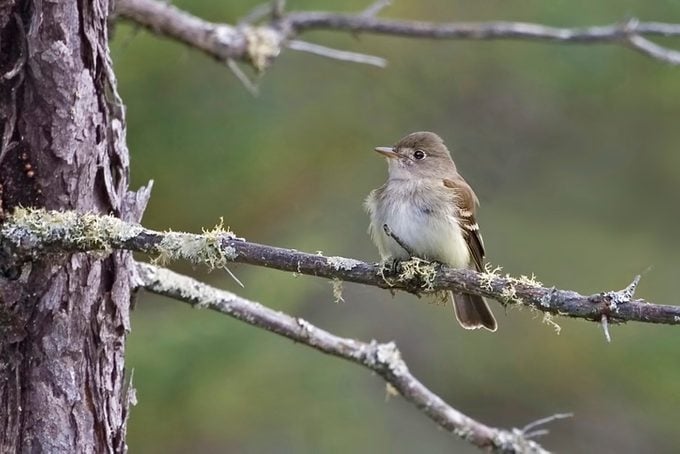
Flycatchers in general are not the most musical birds, but they have a notable distinction from other singers. Most kinds of songbirds have to learn their tunes: If they don’t hear the song of their species, they’ll never learn to sing it properly. But flycatchers have an instinct to make exactly the right sounds for their own kind—a useful ability in a group where so many species look so much alike.
Flycatcher Bird Hotspot
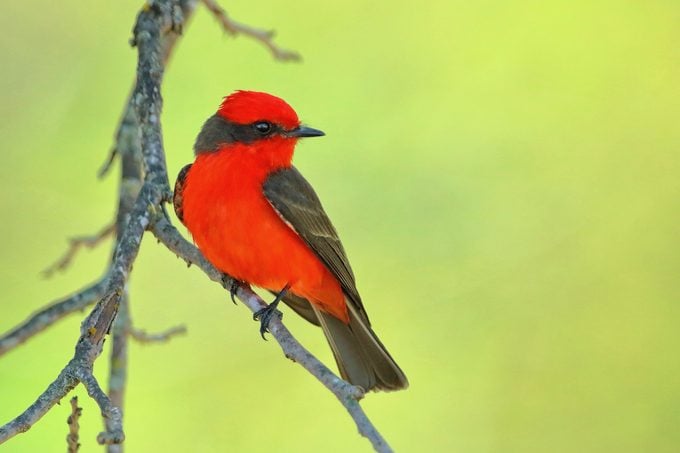
Because almost all of North America’s flycatchers are migratory—and many more live just south of the border—there’s no better place to find them than the southern tip of Texas. You can see hundreds of migrating and breeding birds, including about 20 flycatcher bird species, at Laguna Atascosa National Wildlife Refuge.




















